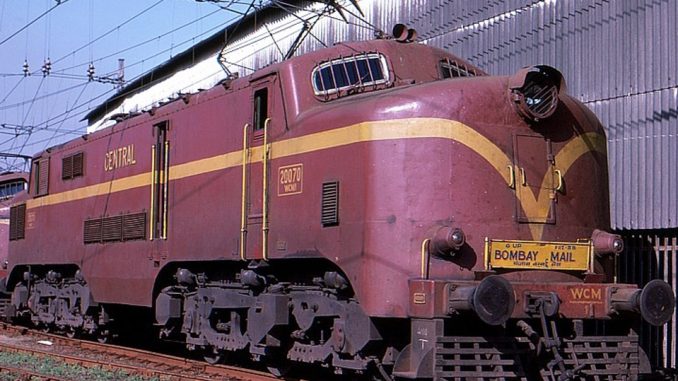
Manufactured by English Electric / Vulcan Foundry. Auxiliaries from Westinghouse. The first electrics with the now familiar Co-Co wheel arrangement to be used in India. They are characterized by their large size and unusually long hoods. The position of the entrance doors is also unusual, being not at the sides of the cabin, but through an entrance in the middle of the loco body side.
Introduced in 1954, several were rebuilt in 1968. They were used on superfast trains such as the Indrayani Exp. and the Deccan Queen (?) until quite recently (the 1990’s). They were rarely used for freight. Air brakes for loco, and regenerative braking. Vacuum train brakes. Three different series-parallel motor combinations are available, as well as weak field operation. MU operation not possible.
[11/99] There are now two of these left, which were homed at Kalyan, and occasionally used for the Pune-Karjat shuttle, piloting duties, or departmental trains. One is reported [4/01] to have been sent to the National Rail Museum, and supposedly earmarked for delivery to the proposed new museum at Chennai. [1/03] The refurbished loco is now the main exhibit at the Chennai Rail Museum.
Manufacturers: English Electric / Vulcan Foundry
Traction Motors: 6 axle-hung, nose-suspended, force-ventilated English Electric
514/2C DC motors (615hp, 700V, 700A, 738 rpm, weight 3594kg).
Gear Ratio: 59:16
Pantographs: English Electric, PNL4-F1. Two provided.
Leave a Reply